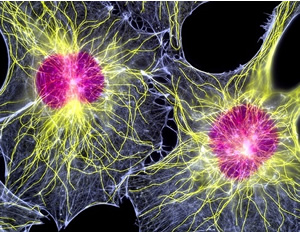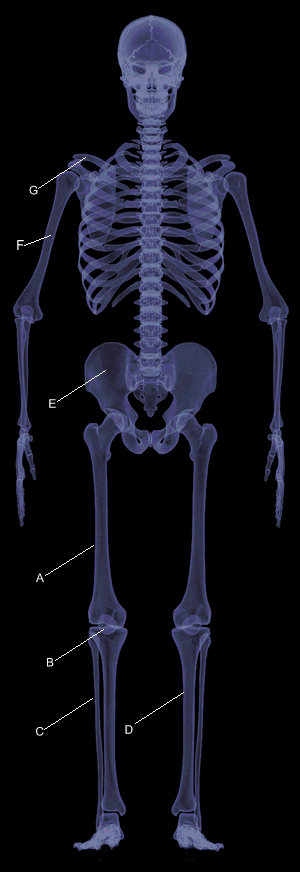The skeleton provides support for the body. It provides a rigid structure to which muscles are attached and offers protection to vital organs, such as the brain, lungs and heart. The human skeleton consists of 206 bones.
To understand bone and cartilage we must look at one of the most abundant proteins in the body, collagen. Collagen is a strong protein produced by specialised cells called fibroblasts. Fibroblasts are pictured on the right with numerous protein chains running through the cytoplasm. They are flat, irregular, branching cells that secrete collagen in the space between neighbouring cells. Collagen is used in tying different tissues together and helping to heal wounds.

Cartilage is a very special sort of connective tissue in which collagen proteins are laid down in a way that allows cartilage to be firm and flexible without stretching. In humans, cartilage cushions bone joints.
Bone, however, is a special form of cartilage in which collagen fibres are covered and impregnated with calcium phosphate.
Research the names of the different bones in the body and label the skeleton on the right.
A =
B =
C =
D =
E =
F =
John broke his ulna. Where is this bone likely to be found?
Another name for the mandible is
